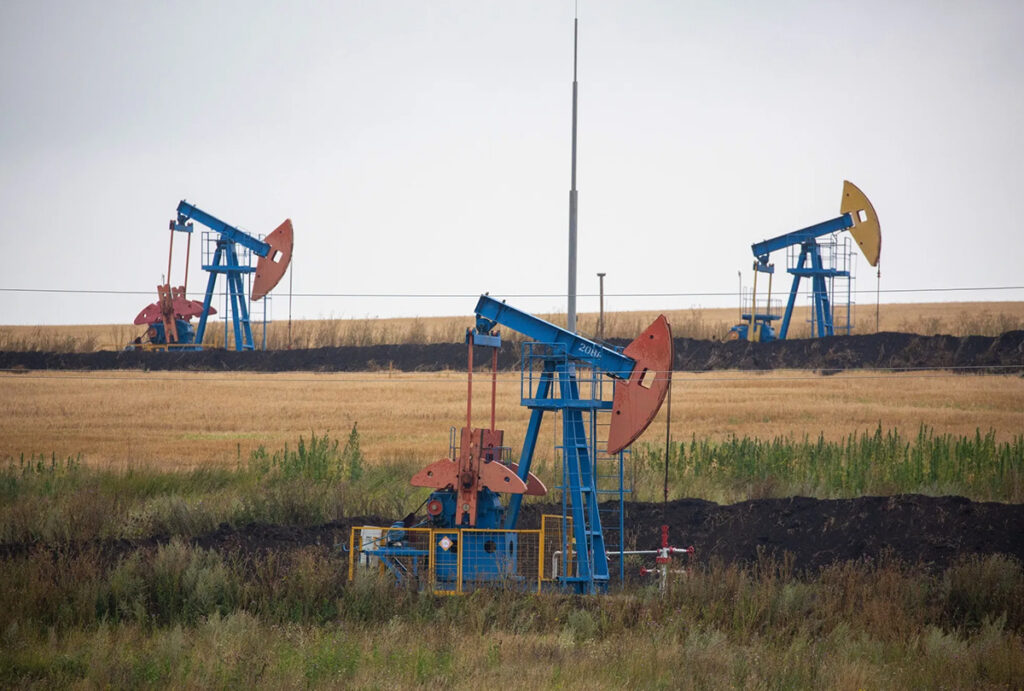By John Ainger

Oil pumping jacks near Almetyevsk, Russia. Photographer: Bloomberg
The European Union gave its strongest signal yet that it’s serious about ending five decades of reliance on Russian energy, but a challenging geopolitical environment may derail its plans.
The European Commission, the bloc’s executive branch, unveiled a roadmap to finally switch off the remaining flows of Russian gas, nuclear fuel and oil, more than three years after President Vladimir Putin’s full-scale invasion of Ukraine. As Bloomberg reported on Monday, the plan would see European companies terminate all their contracts with Russian gas suppliers by the end of 2027.
If the EU succeeds, it would be a remarkable pivot away from what was formerly the bloc’s largest energy supplier: Russia accounted for 40% of its gas needs and a third of its oil consumption before the war. Brussels is betting that it can expand renewable power and source fossil fuels from elsewhere, but its plan could be buffeted by US President Donald Trump’s efforts to broker a peace deal in Ukraine and his demand that Europe buys more American gas.
The EU’s roadmap is seen as part of an overture to Trump, but questions remain over an expansion of liquefied natural gas shipments from the US as Washington threatens trade tariffs. And as the 27-nation bloc plots a way to spike existing Russian gas contracts, Putin has said many times that gas can flow to Europe along the undamaged part of Nord Stream 2 pipeline.
“The war in Ukraine has brutally exposed the risks of blackmail, economic coercion and price shocks,” said Ursula von der Leyen, president of the commission. “It is now time for Europe to completely cut off its energy ties with an unreliable supplier.”
The finer details of how exactly the EU plans to force companies to terminate contracts with Russia will come next month, but the roadmap unveiled on Tuesday in Strasbourg shows that it envisages a phased approach. First, it will ban all new contracts, and halt existing deals on the spot market — a third of Russian gas flows to the bloc — by the end of 2025. Long-term contracts will be phased out by the end of 2027.
Read more: EU Set to Propose Banning Russian Gas Imports by End of 2027
Success is by no means guaranteed. The commission already delayed publication of the plan amid the complexity of working out which tools it could use to force companies to exit secretive contracts with Russia, and Trump’s Ukraine peace initiative. At the same time, the EU is battling high energy prices and fears over an industrial exodus as it transitions to a greener economy.
Those issues haven’t gone away. On Monday, Slovakian Prime Minister Robert Fico wasted no time in criticizing the planned publication of the plan. He’s been trying to keep Russian gas flowing after a transit route through Ukraine was halted at the end of last year, while his nation, alongside Hungary, remains one of the most reliant on oil from Moscow.
“We are jointly troubled by high energy prices, for which the European Union offers no practical solutions,” Fico said. “Quite the opposite. By pressuring to stop energy supplies from the East, EU authorities are, purely for political reasons, creating conditions for further increases in gas prices.”
While EU gas prices are now just a 10th of the peak they reached during the energy crisis following Russia’s invasion of Ukraine in 2022, the region’s supply is still tight as it replenishes depleted reserves. The EU believes that its plan to phase out Russian gas will only have a limited impact on prices, as a new wave of LNG supply hits the market.
Not just gas…
Share This:




 CDN NEWS |
CDN NEWS |  US NEWS
US NEWS 































